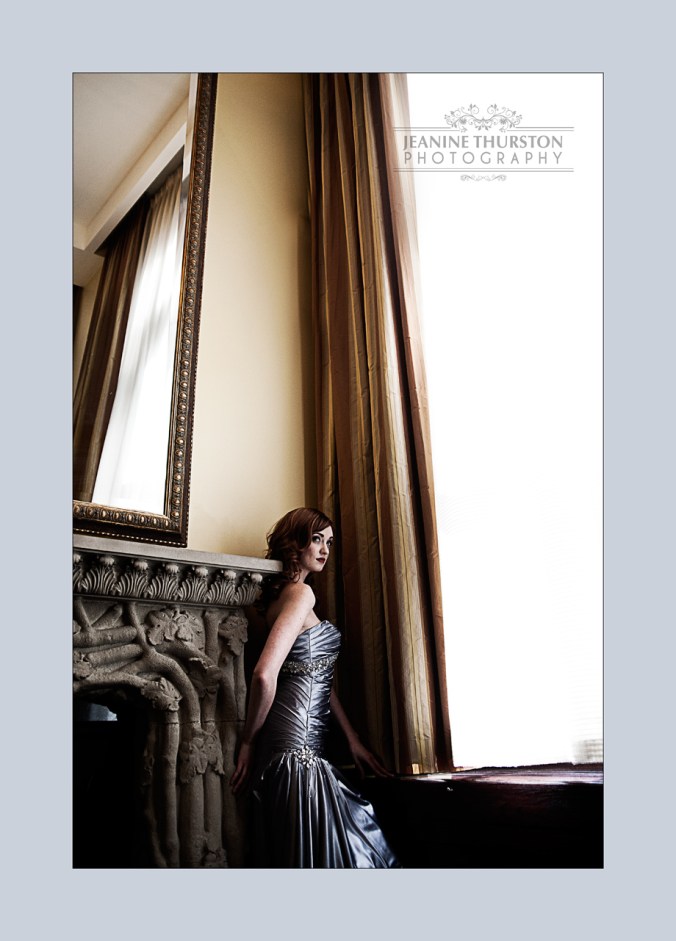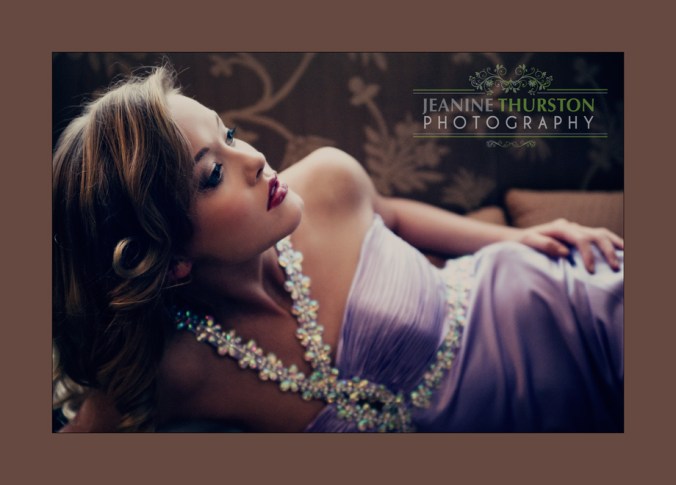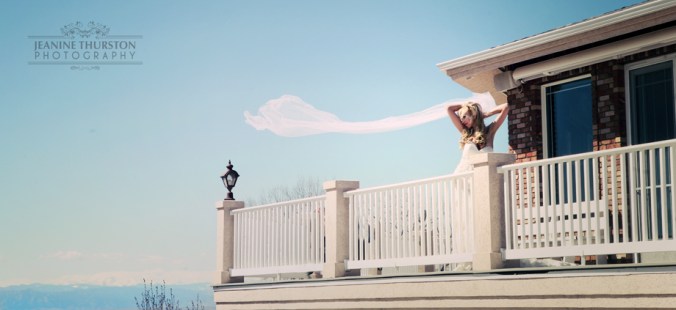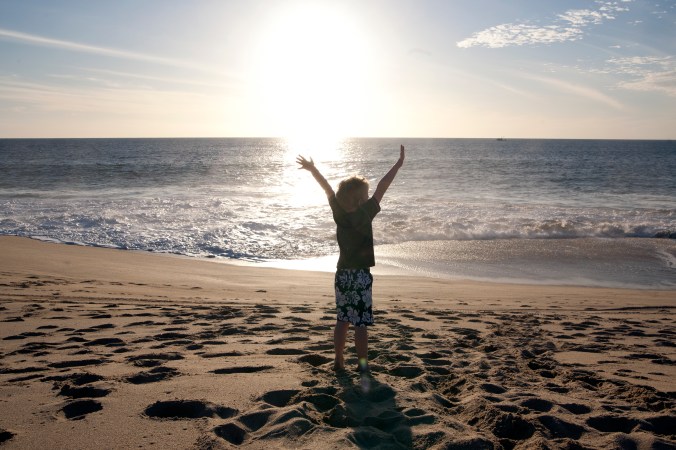As the very earliest daguerreotypes required an exposure time of about eight to ten minutes, and no living person could possibly keep still for so long, there were at first no portraits. (In March 1839, however, L. J. M. Daguerre had shown Samuel Morse a view of the Boulevard du Temple in Paris that included a man having his boots polished—probably the first human being to be recorded, albeit inadvertently, on a photograph.) But exposure times soon became shorter, and as many as 95 per cent of all surviving daguerreotypes seem to have been portraits.
Curiously, many daguerreotypes were reversed ‘mirror’ images, because the process made direct positives, requiring no negatives. Soon, however, daguerreotypists learned techniques for correcting this reversal. When, for instance, Alexander Wolcott opened the first photographic portrait studio in the USA—in New York in 1840—he photographed his sitters reflected in a mirror.
The first professional portrait studios in Britain opened in the early summer of 1841. Richard Beard (1801-85), a coal merchant, built a ‘glasshouse’ on top of the Royal Polytechnic Institution in central London. He soon adopted all the devices that were to become familiar in 19th-century studio portraits: painted backcloths, rich draperies, pedestals, bookcases, heavy armchairs, and footstools, all conjuring up an atmosphere of money and possessions. (But the hundreds of itinerant daguerreotypists who plied their trade in Europe and North America in the decade or so after 1839 made do with more primitive settings.) Among the most consistently fine daguerreotype portraits were those taken by two Americans, Southworth and Hawes, who, in their Boston studio, turned the rigidity of the medium to their advantage, tightly controlling their light sources, the placement of furniture and accessories, and the artfully contrived, iconic poses of their sitters. Though photographers frequently asserted that they could make portraits to rival those made by painters, it was the Southworth and Hawes daguerreotypes which first began to live up to the claim. However, as the example of Cromer‘s Amateur—an anonymous Frenchman—suggests, many other outstanding daguerreotype portraitists will probably never be identified.
Meanwhile, Henry Talbot had recognized the suitability of his negative-positive process for portraiture almost as soon as he made his first ‘photograph from nature’ in 1835, but did not succeed in making a photographic portrait until October 1840. In the event, his calotypes were never as popular for portraits as daguerreotypes, especially in the USA. Although not reversed, they were on fairly coarse-grained paper and could not show as much detail as Daguerre’s fine-grained process. Nevertheless, outstanding results were sometimes achieved, for example in Scotland by Robert Adamson and the painter David Octavius Hill between 1843 and Adamson’s death in 1848. In 1843, Hill witnessed the foundation of the Free Church of Scotland in a ceremony in Edinburgh attended by over 500 church ministers and others. Determining to paint a picture commemorating the event, he joined Adamson in setting up a studio on a hill overlooking the city. The resulting studies for the painting (which took Hill twenty years to complete) owe much to the traditions of Scottish academic painting. They concentrate on the face rather than extraneous detail or background, and demonstrate a rigorous control of daylight (all were taken in the open air) as well as a flair for theatrical posing. With the unrivalled control of the chemical process by Adamson, these are the most accomplished calotype portraits to survive.
If early Victorian portrait photographers soon learned to show their subjects the right way round, their results were still not very lifelike. The slowness of the processes available to them meant that their subjects had to remain motionless for up to a minute at a time. Often, a sitter’s head was held still by a neck clamp; sometimes there was another at the waist. Like a victim of a firing squad, she or he grasps the arms of a chair or other piece of furniture tightly, and stares grimly at an intimidatingly large camera and brass-barrelled lens, while the photographer disappears under a dark cloth to adjust the focus. No wonder the men, women, and children portrayed usually look so miserable, and that we think of the Victorians as strait-laced and humourless.
In the 1850s, both calotypes and daguerreotypes were superseded by Frederick Scott Archer‘s wet-plate process. This changed the practice of photography everywhere, and opened the field of portraiture to amateurs who—because they had unlimited time, often knew their sitters well enough to make them relax, and were not concerned with profit—often outdid professionals in the artistry of their results. A prime example was Charles Lutwidge Dodgson (Lewis Carroll), who started taking portraits at Oxford University in 1853. Although his early efforts showed little originality or skill, he soon learned to make his sitters look more relaxed and natural than most of his contemporaries, despite the fact that his shortest exposure time seems to have been 40 seconds. Like Hill and Adamson, Dodgson concentrated on the face, and took great care in placing his sitters’ hands. Over a quarter of a century, he took hundreds of the most revealing portraits, particularly of the children—mostly girls—who were his favourite subjects.
An even more remarkable amateur was Julia Margaret Cameron, who took up photography aged 48. Closely connected with the artistic and cultural world of the 1860s and 1870s, she photographed the most famous writers, artists, and scientists of the time, bringing her large-format camera close to their heads and shoulders. Using dramatic side lighting, and eliminating extraneous detail (often even covering her sitters’ clothes in dark velvet), Cameron’s depictions of heads at almost life size are the earliest examples of what we now call ‘close-ups’. Her pioneering discovery of the power of indirect, dramatic lighting perhaps derived from the fact that her first studio may have been a greenhouse in her garden on the Isle of Wight, where direct sunlight would have made the wet-collodion process extremely difficult to control. Forced to cover most of the windows to reduce the light, she soon saw the dramatic results of illuminating her sitters from one direction only. An interest in the fashionable ‘science’ of phrenology, which purported to read character and intellect from the shape of a person’s skull, may also have encouraged her use of raking side light to highlight every bump. The combination of Cameron’s large-format camera, reduced lighting, and extreme close-up dictated exposure times of minutes rather than seconds. But the resultant slight movement, together with a frequent lack of focus and imperfections in her developing and printing technique, give her portraits a life and immediacy which has never quite been surpassed.
In France, meanwhile, one professional portraitist achieved something of Cameron’s close-up impact. The head-and-shoulder portraits of Nadar use light almost as dramatically as hers. In due course, he adopted electric lighting, which he could control more precisely than daylight, and his portraits are smoother and more technically proficient than Cameron’s. However, they often lack the immediacy and dramatic impact of hers.
The carte de visite format, patented by André Disdéri in 1854, dramatically cut the cost of portraits and led to a surge in their popularity, especially when Disdéri sold thousands of his pictures of Napoleon III in 1859. The carte de visite was imported to Britain by a French company, Marion & Co., and its most fashionable London practitioner was also a Frenchman, Camille Silvy, who wore elegant clothes and white gloves in the expensively equipped studios he opened in 1859. The pictures he took there certainly stand out from the mass of tiny, flatly lit, stereotyped carte portraits which filled Victorian photograph albums for the next two decades. In England, too, the popularity of the royal family and the desire to collect photographs of them led to commercial success.
In the USA, meanwhile, Napoleon Sarony photographed thousands of actors and celebrities in his New York studio (including Oscar Wilde, on his famous 1882 tour). Like Silvy, Sarony dressed the part. He wore a red fez in the studio, and signed his portraits with a red flourish, an idea surely borrowed from Nadar. Though it is true that, at the turn of the 20th century, it was in the USA that photographers became more and more enamoured of the snapshot, partly because of Eastman Kodak’s non-stop production of cheap roll-film cameras, it was also here that professionals began to assert artistic control over the medium. (But key figures like Emil Hoppé in England and Rudolph Dührkoop and Hugo Erfurth in Germany did so too.) An example of the trend was Gertrude Käsebier, who opened a studio on Fifth Avenue, New York, in 1897. She soon became one of America’s leading portraitists, bringing a new naturalness and life to what was often formulaic and stereotyped. Like many of her contemporaries, she mastered the rather painterly printing processes of the time, making gum bichromate and platinum prints of her pictures. Another influential portraitist, Alvin Langdon Coburn, who worked in Käsebier’s studio 1902-3, did the same. He was an early member of the Photo-Secession, which brought pictorialism to its peak, and whose portraits shrouded their subjects in a romantic out-of-focus haze, giving them the texture and feel of paintings rather than photographs. The pictorialists used soft-focus lenses, developed new printing techniques, and manipulated negatives and prints with brushes, pencils, and scalpels. Though their control of these effects, and their skill at composition, was remarkable, they often seemed to be showing off, reducing their subjects to mere design elements.
Among the photographers who stood out from this crowd were Edward Steichen and Baron Adolphe de Meyer. Steichen had followed in Sarony’s footsteps, photographing celebrities, socialites, and artists (in Paris, he made famous studies of Rodin and his work), and remained active as a portraitist until 1938. De Meyer was a master of pictorialist wizardry, and manipulated light to swathe the glamorous celebrities who visited his studio in what his disciple Cecil Beaton called an ‘aurora borealis’. As a final guarantee of idealized beauty, he employed skilful retouchers to remove any perceived imperfections of face and figure.
Beaton, who took up photography in England in the 1920s, decided that to prosper in this field it was essential to create a glamorous character for himself, as Nadar, Sarony, and de Meyer had done before him. Having succeeded at home, he crossed the Atlantic to work for Vogue, Harper‘s, and Vanity Fair, and went on to Hollywood, where sleek and glossy glamour portraiture reached its height in the work of such men as Ernest Bachrach, Robert Coburn, and Eugene Richee. Returning to Britain just before the Second World War, Beaton took the first of a long series of royal portraits: romantic images of Queen Elizabeth that made her a fashionable icon. No other royal photographer, before or since, so effectively rivalled the flattering court painters of previous centuries.
In the meantime, both in the USA and Europe, a very different, documentary approach to the depiction of people had been developing since the late 19th century. In New York Jacob Riis captured the misery and deprivation of slum dwellers, and both he and Lewis Hine, who photographed immigrant workers and children in appalling factory conditions, used their cameras as tools of propaganda. Later, Paul Strand and Walker Evans, artists more than propagandists, photographed people they encountered in the street or on farms, giving them a dignified nobility. In Germany, August Sander took straightforward pictures of people from every background and walk of life for his monumental People of the Twentieth Century project. In Britain, a less accomplished photographer, Sir Benjamin Stone, had similar ambitions. Sander in particular has continued to influence photographers until the present day, and the attempt to make ‘objective’ formal portraits of people who are asked not to alter their demeanour for the camera (an impossible task) is very much in fashion at the beginning of the 21st century. (Significantly, not only Evans and Sander but contemporaries like Boris Mikhailov, Fazal Sheikh, and Rineke Dijkstra, who depict their subjects with often painful candour, were prominently represented in the huge Cruel and Tender exhibition of documentary-realist photography held in London and Cologne in 2003.).
Well before 1914, gifted amateurs like Jacques-Henri Lartigue had made ‘candid’ portraits, sometimes of people in violent motion. Paul Martin used a disguised camera to snap excursionists and courting couples. After the First World War, cameras like the Ermanox and the 35 mm Leica made this kind of photography much easier. In Paris, André Kertész and Brassaï often photographed people unawares. Despite the spontaneous nature of these street pictures, the photographers developed an extraordinary ability to produce well-composed and penetrating images which seemed to capture an emotional reality about their subjects (who, as people on the move, could no longer be called sitters). The split-second instant when the disparate elements of a candid photograph lock together to convey meaning came to be called the ‘decisive moment’, a concept later defined by Kertész’s and Brassaï’s French contemporary, Henri Cartier-Bresson.
One partial consequence of the development of the 35 mm camera was the proliferation of photographic news magazines, which flourished in the Weimar Republic and reached Britain in the shape of Picture Post and the USA with Life. They used photographic portraits in considerable numbers. The photojournalists who took them are too numerous to list here, but increasing editorial use of portraits—in newspapers as well as magazines—meant that eminent people became more familiar to the public than ever before, and often in less formal contexts and attire. Some of these photojournalists, and other 20th-century photographers, kept alive the icon-making ambitions of Julia Margaret Cameron, especially in North America. The American Arnold Newman and the Canadian Yousuf Karsh learned their trade as assistants to commercial portraitists in cities with moneyed clients—Newman in Philadelphia and Karsh in Boston. Starting their own studios, they specialized in heroic portraits of politicians, scientists, artists, and other successful people. Newman often included the tools of his subjects’ trade to make ‘environmental portraits’; Karsh’s dramatically lit concentration on the face and exclusion of unnecessary detail more closely emulated Cameron’s style.
One theme in the history of 20th-century portraiture, however, is the retreat from the Victorian cult of heroes and their historical role, and from the ‘proper’ (dressed-up, dignified) photographic pose. By the 1920s, swimwear, cigarettes, and informal or risqué poses were becoming common. (Ever the pioneer, Lartigue had captured friends and relations hurtling down steps or falling off go-karts or into ponds, and in 1920 his wife Bibi sitting on a lavatory.) Newman, too, with his careful pre-planning and skilled lighting, took a handful of overtly non-heroic portraits. His studies of the German arms manufacturer Krupp and the British politician Enoch Powell make both look like the villains he obviously thought them to be. Newman’s younger countryman Richard Avedon often placed his subjects head on in front of a plain light background and waited, silently, for them to strike a pose—which he then captured with a sudden flash. The edgy, uncomfortable, disorientated people who stare out from his photographs are anything but heroic, not just because of his harsh and uncompromising lighting, but because his silence was the opposite of the relaxing conversation with which portraitists often put sitters at ease. One powerful set of Avedon portraits documents the last four years of his own father’s struggle with cancer. In some ways just as disturbing are the portraits of handicapped people and social misfits taken by Diane Arbus. Contemporary photographers such as Nobuyoshi Araki, Seiichi Furuya (b. 1950), Nan Goldin, and Sally Mann have variously captured their subjects—often friends, lovers, or family members—naked, angry, sick, or dying.
Another, contrasting kind of successor to photographers like Newman is perhaps Annie Leibovitz, who began her career photographing rock stars for Rolling Stone magazine, then Vanity Fair. Her portraits are witty, imaginative, and frequently very elaborate, if seldom intimate. One complex collage by the artist David Hockney reveals how, for her portrait of him, Leibowitz arrived with an assemblage of people and equipment worthy of a Hollywood production. Such effects are difficult to achieve, and call for supreme self-confidence in the photographer. One cannot take images of great people unless one has a strong character oneself. Throughout the medium’s history, the finest portraits of powerful subjects have been taken by powerful photographers.
By the end of the 20th century, such carefully worked portraiture had all but disappeared. Editorially, it has been replaced by ‘celebrity’ snapshots. Rather than attempting to capture the inner character of their sitters, these highly coloured, hard-edged images—often taken by photographers who started their careers as paparazzi, or who have adopted elements of the usually flash-litpaparazzo style—glory in actuality, fashion, and glamour. Among the best and most celebrated exponents of the style is Mario Testino (b. 1954), who leads the pack in the way that Camille Silvy led the 19th-century purveyors of cartes de visite.
In contrast to this strident cultivation of celebrity, the art world—which has increasingly embraced photography—has favoured the intense gaze of the apparently objective camera which, as already noted, owed much to the influence of August Sander. This began to reassert itself in Germany in the late 1970s and 1980s. An early practitioner of the style was Michael Schmidt, who first documented Berliners and their surroundings, then made an exhaustive study of his own face and body. Thomas Ruff and Thomas Struth, both based in Düsseldorf, were much influenced by their teachers Bernd and Hilla Becher. Struth seeks to use his camera as a psychological tool, and is particularly interested in group and family dynamics. Ruff, in contrast to the attempts of generations of photographers who have striven to get beneath the surface contours of objects and people, believes that photographs can show no more than an outer likeness. It is clear, from the placement of the sitters in the frame and their frequent direct gaze at the camera, that they are willing participants. But, like the Bechers’ photographs of buildings, their portraits delineate exteriors and reveal nothing interior. Ruff’s larger than life-size colour head-and-shoulder prints resemble highly finished, outsize passport photographs, though they undoubtedly have a powerful—if impersonal—presence on gallery walls.
The work of these artists and their contemporaries (such as Nicholas Nixon and Fazal Sheikh in the USA, and Rineke Dijkstra in the Netherlands) is mostly intended for museums rather than family albums, newspapers, or even books. In this, it is radically different from earlier photographic portraiture. If such portraits reveal less and less about what lies beneath the skin of the people in them, it is worth remembering that, in the 21st century, most men, women, and children own cameras. The snapshots we take of each other have been the most numerous photographic portraits since Eastman launched the Kodak camera. Whatever direction photographic portraiture takes next, we can be confident that our wish to preserve likenesses of our nearest and dearest will always sustain it.
— Colin Ford















